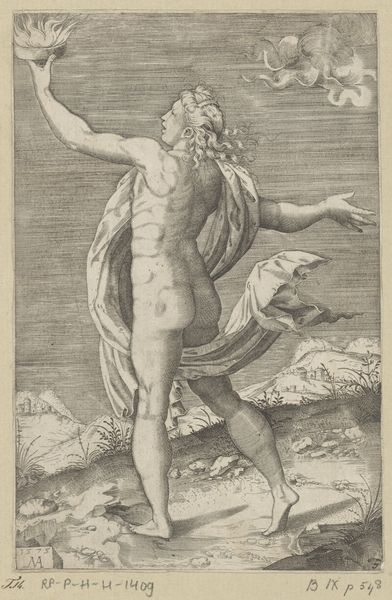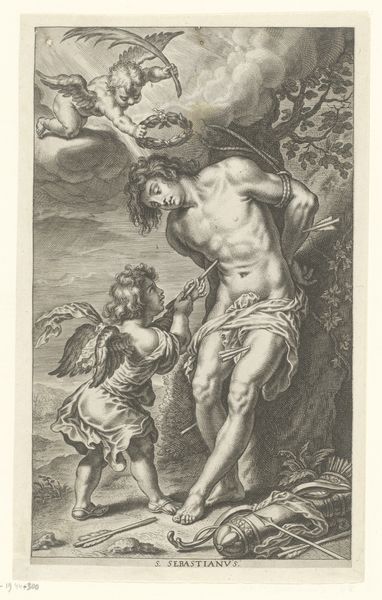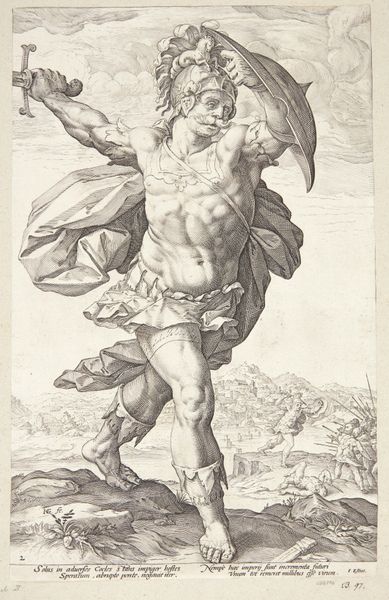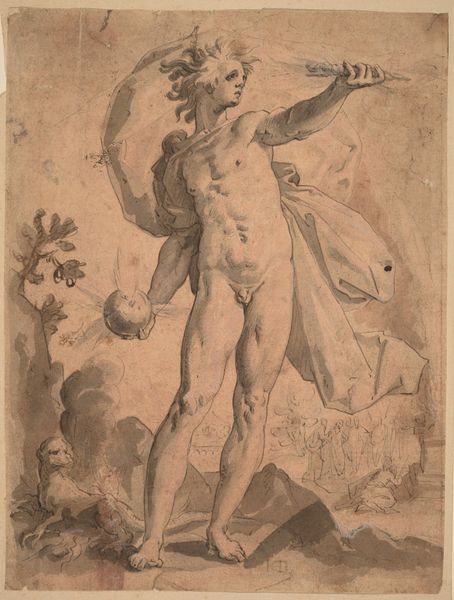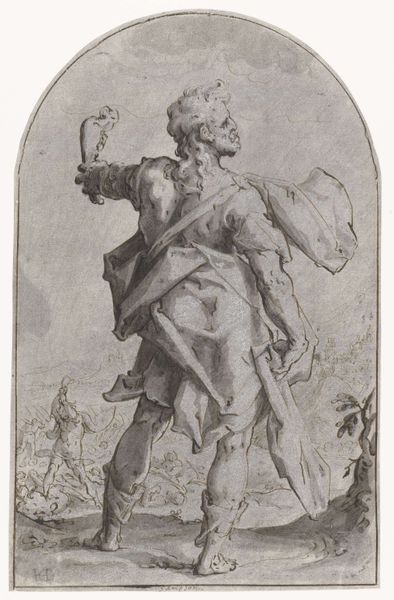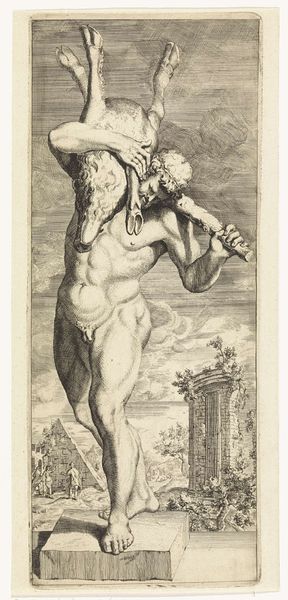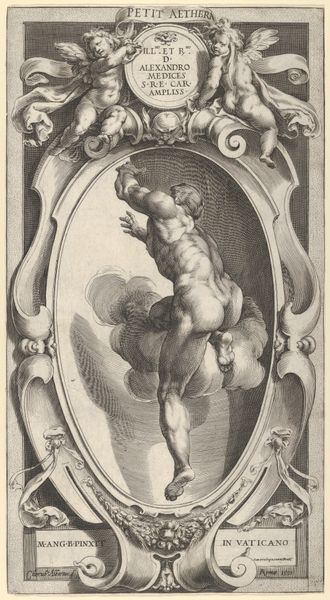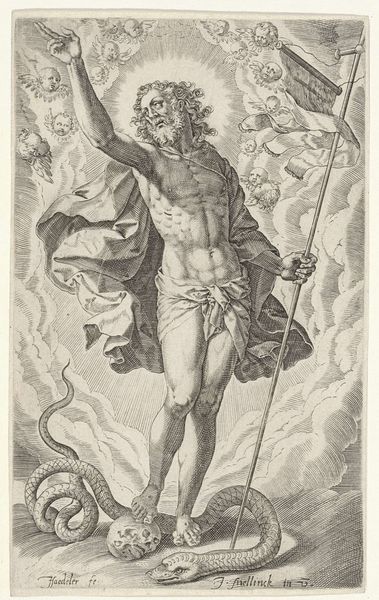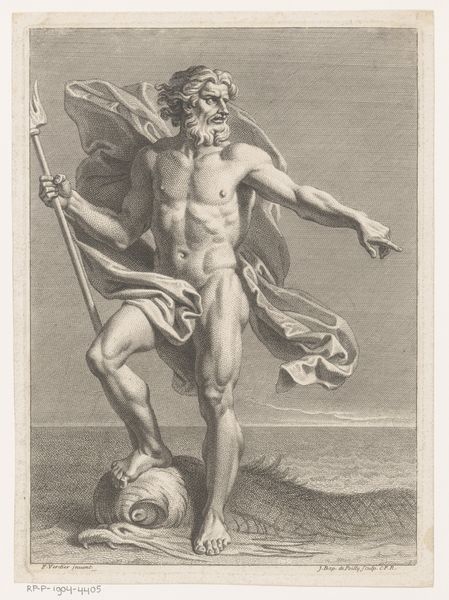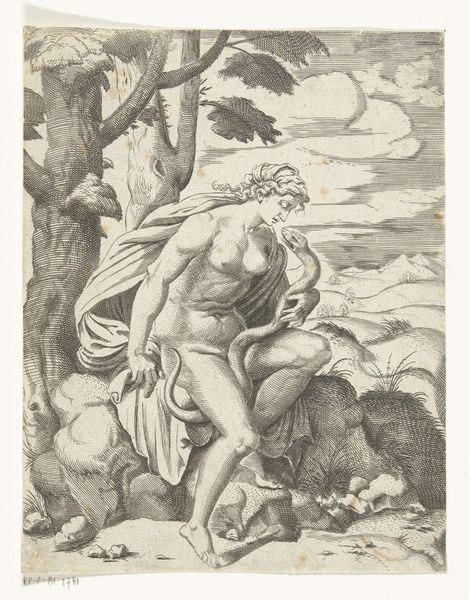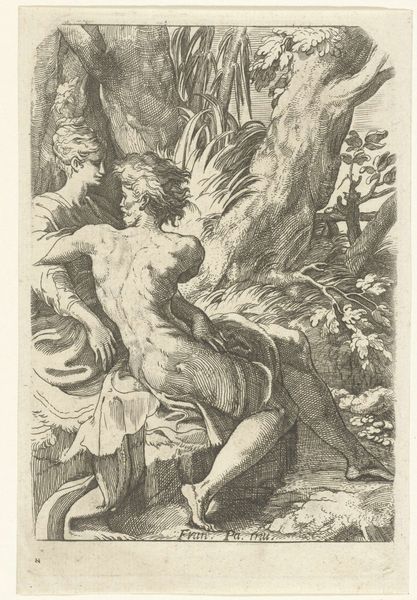
print, engraving
#
allegory
# print
#
caricature
#
mannerism
#
figuration
#
pencil drawing
#
line
#
nude
#
engraving
Dimensions: height 348 mm, width 267 mm
Copyright: Rijks Museum: Open Domain
Curator: Hendrick Goltzius created this intriguing print, "Helios (Dies)," sometime between 1588 and 1590. It now resides in the Rijksmuseum. Editor: My first impression is one of theatrical drama, the pose exaggerated, the lighting stark. Curator: The engraving medium allows for such contrast, doesn't it? Consider the socioeconomic context of printmaking at this time. Goltzius, like many artists, navigated a market where prints served multiple functions: artistic expression, dissemination of ideas, and even commercial venture. This work's exaggerated style places it firmly within the Mannerist tradition. Editor: Precisely. The twisting contrapposto of the figure, that artificial elegance—it's pure Mannerist affectation. And the composition, held within the oval frame, emphasizes the artifice. Look at the cloud formations; they lack naturalism, serving only to highlight the central figure through tonal contrast. Curator: And note that “Dies” in the title alludes to the sun god’s decline or death, personifying an allegorical moment in time. Consider what would it mean in the late sixteenth century to represent this scene, and what specific viewers were meant to be persuaded by this vision. Editor: Perhaps a commentary on mortality or the fleeting nature of power? Regardless, formally, the strength lies in Goltzius’s mastery of line—the way he suggests form and shadow through densely worked hatching and cross-hatching. Look at how that linear density sculpts the figure’s muscles. Curator: Absolutely, this speaks to the technical labor involved. Engraving demands intense focus and skill. The consumption of such an image also marks the print trade itself as both luxury, and tool for a rising merchant class. Editor: I'm still struck by how the composition enhances the allegory by emphasizing its abstract form: that deliberate artificiality, designed to provoke and inspire... Curator: These interwoven elements certainly give this print considerable staying power, don’t they? Editor: Indeed. A rich example of aesthetic ideals intertwined with very real economic practices of the time.
Comments
No comments
Be the first to comment and join the conversation on the ultimate creative platform.
